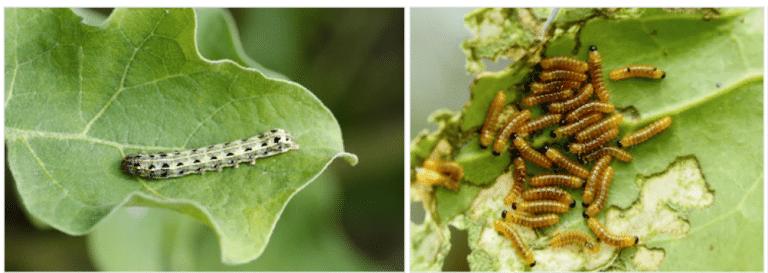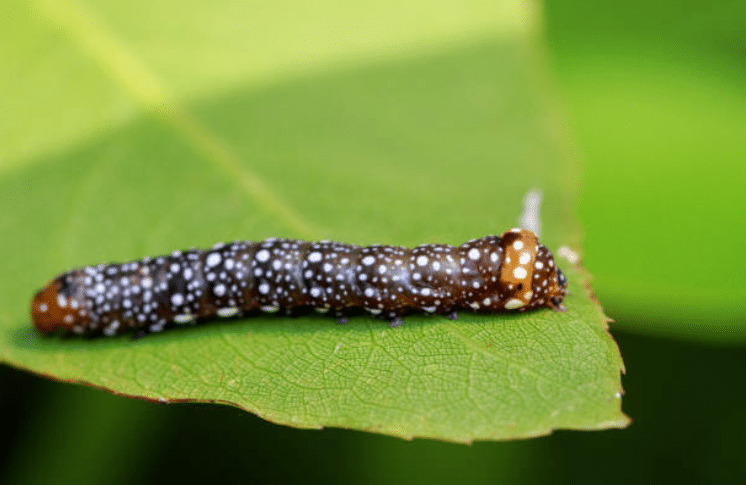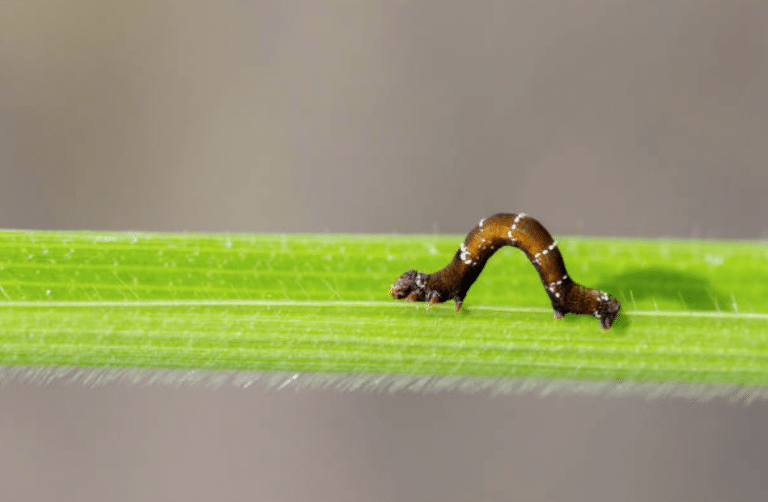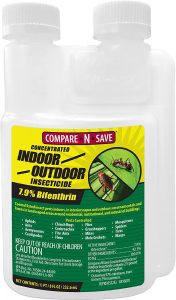Cutworm infestations are horrid. Many advertised solutions do not work, which is why you need the best insecticides on the market. Do not be one of those people that figure that out too late. The solutions below will help you get rid of these pests once and for all.
There’s absolutely nothing worse than starting what will be a beautiful, bountiful garden, only to have those plants damaged or destroyed by cutworms. These insects, which are actually caterpillars, emerge from the soil during warm weather. They feed on the parts of the plant that are easiest to reach, which is generally the stem. When they feed on seedlings, they often cut right through the stem, which ultimately kills the seedling.
Fortunately, there are several ways to get rid of them or reduce the damage they cause. Learning to identify these caterpillars and choosing a good insecticide can help to save your beautiful garden.
Make sure to check out our guide on growing different vegetables and fruits. For instance, we have a guide on growing ground cherries.
Comparing Our Top Recommendations
Table could not be displayed.
At A Glance
- Bifen I/T Insecticide-Bifenthrin
- Quali-Pro 1 Gallon Insecticide
- 7.9% Bifenthrin Concentrate for Insect Control
These are the products on the market that we recommend. Please keep reading below to learn more about each one.

Best Insecticides for Cutworms
Bifen I/T Insecticide-Bifenthrin
Bifen’s strong yet safe formula helps to get rid of any cutworms already in the garden while also discouraging the moths that lay eggs. It has no odor and doesn’t leave a residue, so it’s simple to spray on and let it go to work. Another great feature of this product is that it works for up to three months and can be used indoors or outside.
Unlike many other chemicals and pesticides, Bifen’s formula is non-volatile and does not react to sunlight. This makes it easier to use and much safer to handle. Also, Bifen’s formula can help reduce other garden pests such as chiggers, ticks, silverfish, Japanese beetles, midges, cockroaches, and elm leaf beetles, among others.
Quali-Pro 1 Gallon Insecticide
Quali-Pro contains 7.9 percent bifenthrin, which is perfect for getting rid of a host of different garden pests, including cutworms. It can help to eliminate any current pests and can also help prevent them from returning. In addition, it is safe to use around homes or garden structures, so you can even use it in window boxes or any planted areas that sit near the foundation of your home.
The product can be mixed with water in order to create an easy to use spray. It may make your life easier to create such a mix and spread with a sprayer. These inexpensive sprayers usually come with a long nozzle, so gardeners can reach anywhere in the garden and can be sure that they’re eliminating any potential worms.
7.9% Bifenthrin Concentrate for Insect Control
Bifenthrin is a powerful product that works by interfering with the nervous system of insects. It’s actually a manmade version of a natural chemical originally harvested from chrysanthemum flowers. This particular concentrate is safe to use both indoors and out, so you can feel good about applying it to your plants. The only downside is that this concentrate should not be used on fruits, vegetables, or nuts that will be eaten.
The bifenthrin concentrate is also simple to use. You can mix it with water in order to create a spray that’s easy and safe to apply. This concentrate can be mixed with other pesticides, too, in order to completely eliminate a cutworm threat. Gardeners should apply the concentrate when the weather is sure to be clear for at least 24 hours so that rain won’t wash it away. This particular concentrate makes up to 44 gallons of spray and will cover an area of 44,000 square feet.

You might also be interested in our guide about different companion plants you can grow for pest control.
Everything a Gardener Should Know About Cutworms
Cutworms all look quite similar, but they’re not actually all the same species. Several moth larvae have cutworms tendencies, so they’re all called by the same name. What they do share in common is that they all hide under loose leaf litter or soil during the day and come out at night or when the sky is sufficiently overcast to much on plants. It is when they have the protection of the dark that they do the most damage.
They are particularly destructive because they often kill a large number of seedlings at a time. Although some varieties eat the plant they’ve cut down, others simply move onto the next seedling, leaving the first seedling as waste.
Cutworms generally burrow back under the safety of the leaves or soil once the sun begins to rise. These caterpillars are sensitive to light and will often drop from plants when you shine a flashlight on them. If you suspect you have these pests in your garden, you can take a flashlight into your garden during the later evening hours. This is the optimal time to catch them in the act.
Cutworms live in the soil or leaf litter for about a month, eating whatever they can reach in order to grow. After this, they burrow back into the soil and become pupae, forming a chrysalis before emerging as moths.
Identification
Because they are actually several different species of caterpillars grouped under one name, they can be somewhat difficult to identify. The caterpillars are usually about an inch or two long and are yellow, gray, green, brown, or sometimes even pink in color. Cutworms often have darker stripes or markings as well. They also have round, soft bodies and look a bit like grubs.
You might be able to spot them by gently digging in the soil around damaged plants or grass. They don’t burrow too far down, so you may spot them just under the surface. Pouring water mixed with soap near damaged areas may also cause the caterpillars to attempt to escape, and you’ll see them wiggle their way up. Once exposed, cutworms curl themselves up into a tight ball.
You may also be able to spot moths that land on lawns or in gardens in order to lay their eggs. The adult moths, like the caterpillars, all look slightly different. They usually have a dark brown appearance with black markings. They can also often be quite large, with a wingspan of between one to two inches.
Prevention
Aside from applying insecticide to your current problem, you can also try to prevent the same problem from occurring next year by taking a few precautionary steps.
Cutworm moths return to lay their eggs in sheltered areas, such as places with tall grasses or a good amount of leaf debris. Keep your gardens clear of litter by tilling the soil at the end of the season. You can also keep your lawn trimmed to discourage moths from laying eggs. Gardeners can also work to get rid of the moths. Buckets filled with bait will trap the moths, preventing them from laying any eggs.
In addition to tilling or plowing at the end of the season, tilling during the winter can expose any eggs that were laid. Tilling or plowing just before planting can also help to kill the young larvae that haven’t yet emerged from the soil.
In the spring, their eggs hatch and the larvae crawl out and immediately begin searching for something to eat. Regularly weeding a garden, even before spring planting has begun, means that emerging larvae won’t have anything to eat. Many may starve, eliminating a good deal of the problem. You can also starve out cutworms by waiting until the last moment before transplanting any new plants or seedlings to the garden.
If you think you might have a cutworm problem, you can also starve the larvae by encircling plant stems with a protective collar. Metal or cardboard collars work particularly well. However, this method doesn’t usually deter more mature cutworms, which are big and strong enough to climb up to higher places on the plant. At this point, an insecticide is often the only option.

Tips to Safely and Effectively Application
Insecticides are incredibly helpful and can save your garden from a cutworm attack. When applying, though, it’s important to do so carefully and safely. Preparing and applying correctly can also help to ensure that you’re entirely eliminating the infestation.
When mixing the product that you buy, it’s important to do so in a well-ventilated area. Follow the instructions on the label and only mix as much as you need at the time. Although it might seem more efficient to mix everything at once, this can actually lower the quality and effectiveness of the insecticide over time.
Wait for a calm day without too much wind to apply. This helps to guarantee that the insecticide is only going where you want it. Setting the nozzle on the sprayer to produce larger droplets instead of a fine mist can also help with this.
Get close to the plants you want to spray in order to ensure that you’re getting good, full coverage. However, don’t overspray. Applying too much can cause the formula to run off and might also harm the plants you’re trying to protect.
When you’ve finished applying, secure the cap and return all the unused product to an enclosed storage area where children and pets can’t reach it. Then sit back and watch as your problem disappears.
Bottom Line
Again, I recommend buying Bifen’s insecticide for your cutworm problem. Don’t make the mistake of buying any average product at your local gardening store only to find it is not effective against cutworms weeks later. Many of them will simply not produce the same results. You cannot go wrong with any of the choices above.



